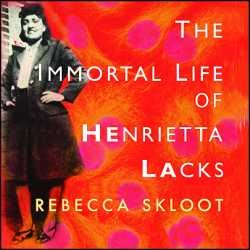

I've tried to imagine how she'd feel knowing that her cells went up in the first space missions to see what would happen to human cells in zero gravity, or that they helped with some of the most important advances in medicine: the polio vaccine, chemotherapy, cloning, gene mapping, in vitro fertilization. I've spent years staring at that photo, wondering what kind of life she led, what happened to her children, and what she'd think about cells from her cervix living on forever -bought, sold, packaged, and shipped by the trillions to laboratories around the world.
The immortal life of henrietta lax code#
She's simply called HeLa, the code name given to the world's first immortal human cells - her cells, cut from her cervix just months before she died.

She's usually identified as Helen Lane, but often she has no name at all. No one knows who took that picture, but it's appeared hundreds of times in magazines and science textbooks, on blogs and laboratory walls. Beneath the photo, a caption says her name is "Henrietta Lacks, Helen Lane or Helen Larson."
The immortal life of henrietta lax skin#
Her light brown skin is smooth, her eyes still young and playful, oblivious to the tumor growing inside her - a tumor that would leave her five children motherless and change the future of medicine. It's the late 1940s and she hasn't yet reached the age of thirty. She looks straight into the camera and smiles, hands on hips, dress suit neatly pressed, lips painted deep red. There's a photo on my wall of a woman I've never met, its left corner torn and patched together with tape. She has written feature stories for The New York Times, Discover Magazine, and RadioLab. Skloot is a freelance science writer and a contributing editor at Popular Science. Medical writer Rebecca Skloot examines the legacy of Lacks' contribution to science - and effect that has had on her family - in her new book, The Immortal Life of Henrietta Lacks. Lacks' family, however, didn't know the cell cultures existed until more than 20 years after her death. Her cells were commercialized and have generated millions of dollars in profit for the medical researchers who patented her tissue. Gey discovered that Lacks' cells could not only be kept alive, but would also grow indefinitely.įor the past 60 years Lacks' cells have been cultured and used in experiments ranging from determining the long-term effects of radiation to testing the live polio vaccine. She was treated at Johns Hopkins University, where a doctor named George Gey snipped cells from her cervix without telling her.

In 1951, an African-American woman named Henrietta Lacks was diagnosed with terminal cervical cancer. Rebecca Skloot teaches writing in the MFA program at the University of Memphis.


 0 kommentar(er)
0 kommentar(er)
